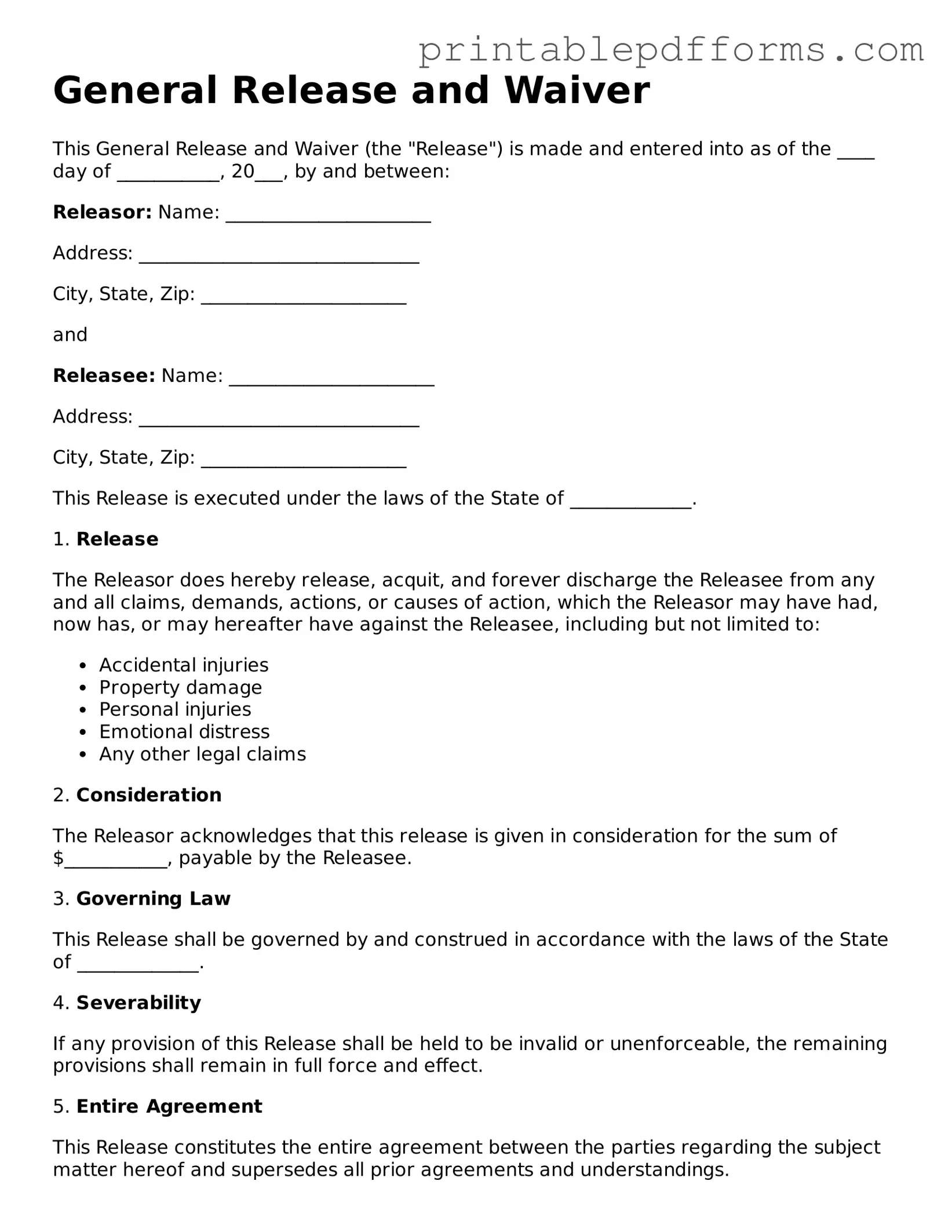General Release and Waiver
This General Release and Waiver (the "Release") is made and entered into as of the ____ day of ___________, 20___, by and between:
Releasor: Name: ______________________
Address: ______________________________
City, State, Zip: ______________________
and
Releasee: Name: ______________________
Address: ______________________________
City, State, Zip: ______________________
This Release is executed under the laws of the State of _____________.
1. Release
The Releasor does hereby release, acquit, and forever discharge the Releasee from any and all claims, demands, actions, or causes of action, which the Releasor may have had, now has, or may hereafter have against the Releasee, including but not limited to:
- Accidental injuries
- Property damage
- Personal injuries
- Emotional distress
- Any other legal claims
2. Consideration
The Releasor acknowledges that this release is given in consideration for the sum of $___________, payable by the Releasee.
3. Governing Law
This Release shall be governed by and construed in accordance with the laws of the State of _____________.
4. Severability
If any provision of this Release shall be held to be invalid or unenforceable, the remaining provisions shall remain in full force and effect.
5. Entire Agreement
This Release constitutes the entire agreement between the parties regarding the subject matter hereof and supersedes all prior agreements and understandings.
IN WITNESS WHEREOF, the parties have executed this General Release and Waiver as of the date first written above.
Releasor Signature: ________________________ Date: ________________
Releasee Signature: ________________________ Date: ________________
